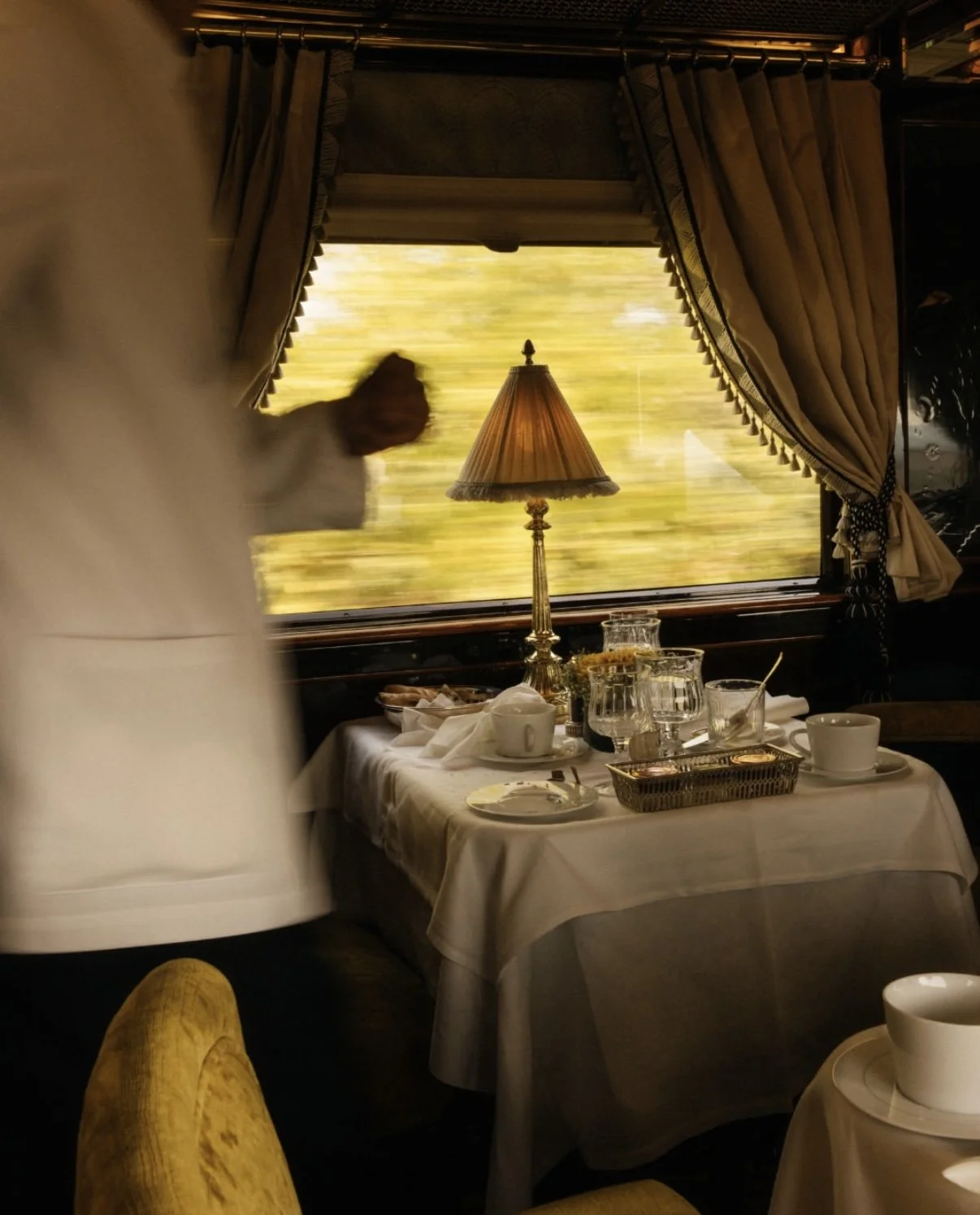The Art of Travel: Aboard the Venice Simplon-Orient-Express
The Venice Simplon-Orient-Express doesn’t merely transport you across Europe—it takes you back in time. With its gleaming 1920s carriages, candlelit dinners, and the soft clink of crystal echoing through the bar carriage, this legendary train turns travel into a reverie of elegance, nostalgia, and unhurried luxury.
There are trains, and then there is the Venice Simplon-Orient-Express—a moving masterpiece that turns the mundane act of transit into pure theater. Beneath its polished brass fixtures and midnight-blue livery lies something rarer than opulence: romance. The kind that belongs not to practicality, but to possibility.
From the moment one steps aboard this storied train—original 1920s carriages lovingly restored to their Art Deco grandeur—it becomes clear that this is no ordinary journey. This is time travel.
Photography courtesy of Belmond
Operated by Belmond, the Venice Simplon-Orient-Express harks back to the golden age of travel, when elegance and unhurried indulgence were not indulgences at all, but expectations. With its inaugural voyage in 1982 (and a lineage that echoes the original 1883 route), the train winds through Europe on a number of storied itineraries—London to Venice, Paris to Istanbul, Vienna to Prague—reviving the legacy of aristocrats, spies, and starlets who once traveled in similar style.
Each carriage has a history: a bar car where conversations echo beneath Lalique glass panels; sleeping compartments paneled in rich marquetry and mahogany; dining cars where white-gloved stewards serve five-course dinners as the Alps slip past like a dream.
Photography courtesy of Belmond
Forget Wi-Fi. There is none. The only network here is the one that connects guests over flutes of Champagne in the bar car, where a pianist plays Cole Porter into the night. Here, the silence is interrupted only by the gentle clink of crystal, the rustle of silk, the slow roll of the train through the night.
Mornings begin with fresh croissants and silver pots of coffee served in your cabin. Afternoons bring promenades through the train’s corridors, where each turn offers an Instagram-proof vignette: etched mirrors, vintage lamps, velvet banquettes. The dress code is not optional, but intentional—formal attire is expected at dinner, a nod to an era when glamour was less about show and more about reverence.
Photography courtesy of Belmond
Yes, the train stops. In cities like Verona, Innsbruck, and Bucharest, passengers may step off for guided tours or spontaneous wanderings. But truly, no one boards this train for the destinations. The train is the destination. And to experience it is to understand that travel is not about arriving—it’s about the in-between.
It’s about sipping Bordeaux as the sun sinks behind Alpine peaks, about penning postcards in the quiet of your cabin, about the subtle, hypnotic rhythm of steel wheels on tracks that have carried dreams across a continent for over a century.
The Venice Simplon-Orient-Express doesn’t merely transport you across Europe. It escorts you into a different version of yourself: more elegant, more introspective, more attuned to beauty. It is a living relic of a slower, finer time—one that insists, against the modern tide, that how we get somewhere matters just as much as where we’re going.
It is not just a train. It is a dream—on rails.



